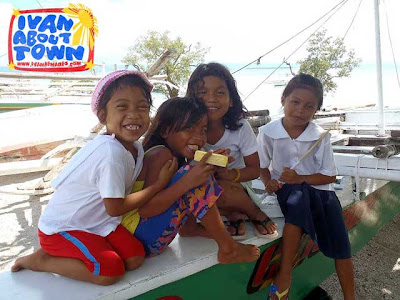
Lasting change must be community led. That is the rationale behind the environmental conservation programs of Rare, a US-based conservation organization that works globally to equip people in the world's most threatened areas with the tools and motivation they need to care for their natural resources.
Last week, we were invited to join the team from Rare on Hambongan Island as they launched the Inabanga Rare Pride Campaign together with the people of Inabanga, Bohol.

What is a Pride Campaign?
At the cornerstone of Rare's work is a unique tool called the Pride Campaign. Its mix of capacity building and social marketing equips Conservation Fellows in their development of a community led conservation plan.
The goal is to create long-term change in local behavior by inspiring pride in the threatened species and habitats that make their community unique. This begins the transformative process that has led to the growth of marine protected areas and the effective protection of threatened species all over the Philippines.
Rare currently has twelve campaign sites in the Philippines where they have launched programs for sustainable fishing.

Inabanga Rare Pride Campaign
From Tagbilaran City, we motored to Inabanga which was about an hour and 45 minutes away. The first order of business was a parade around town with Meloy, the campaign mascot. He represents a Panther Grouper, a vulnerable species that is sold for food or in the aquarium trade. All Pride Campaigns have their own mascots.
After unveiling the campaign billboard, a program was held to launch the Inabanga Rare Pride Campaign led by Mayor Jose Jono Jumamoy and Rare President and CEO Brett Jenks. Do watch the video about the Inabanga Rare Pride Campaign and the issues they are trying to resolve.


Before noon, participants took two large boats to Hambongan Island for the second part of the launch, this time with the target community of the Rare Pride Campaign. Hambongan Island was really pretty. After a sumptuous lunch, we went around the island to explore.


We were taken to one side of the island where the Hambongan Elementary School is located. The buildings of the school have large cracks due to the strong explosions from dynamite fishing that was rampant before.


To address this, the local government created the Hambongan Island Fish Sanctuary in 2000 out of 14.1 hectares of waters between Hambongan and Bugatusan Islands. A community education campaign was initiated while locals were introduced to other sources of livelihood such as seaweed harvesting and processing, and the sustainable collection of marine wildlife for the aquarium trade. We actually got to tour their small processing facility for aquarium fish.

While dynamite fishing is now less of a threat, the campaign also created a hotline for people to report illegal activities direct to the local government so violators are immediately apprehended.

What makes Rare different from many other international conservation organizations is that their approach is to work directly with the community, preparing them to care for their natural resources on their own. Once the program is completed, locals will be equipped with the necessary knowledge, skill and drive to protect the resources of their community.
If conservation does not happen now, there will be nothing left to be proud of.


















